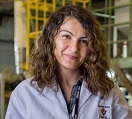Day 2 :
Keynote Forum
J. Javier Brey
Spanish Hydrogen Association
Spain
Keynote: Production of bio-hydrogen as fuel to feed transportation infrastructure
Time : 09:00- 09:25

Biography:
Abstract:
Keynote Forum
Thomas Foust
National Renewable Energy Laboratory
USA
Keynote: Producing advantaged biofuels for heavy duty and jet engines
Time : 09:25-09:50

Biography:
Abstract:
- Track 8: Aviation Biofuels
Session Introduction
Mark Nimlos
National Renewable Energy Laboratory
USA
Title: Catalytic Upgrading of biomass pyrolysis vapors
Time : 09:50-10:10

Biography:
Abstract:
Nicolaus Dahmen
Karlsruhe Institute of Technology (KIT)
Germany
Title: The bioliq-process for synthetic chemicals and fuels production
Time : 10:10-10:30

Biography:
Abstract:
Siek-Ting Yong
Monash University Malaysia
Title: Bioenergy produced from plant waste
Time : 10:30-10:50

Biography:
Abstract:
Parvana Aksoy
TUBITAK MRC Energy Institute
Turkey
Title: Production of biocrude oil by waste biomass CatLiq process and characterization of oils
Time : 11:05-11:25

Biography:
Abstract:
Mehmet Unsal
TUBITAK MRC Energy Institute
Turkey
Title: CatLiq- catalytic hydrothermal liquefaction process from pilot scale to demo scale
Time : 11:25-11:45

Biography:
Abstract:
- Track 3: Biodiesel
Track 7: Bioalcohols

Chair
Adam Lee
Aston University

Co-Chair
Antonio Meirelles
University of Campinas
Brazil
Session Introduction
Adam Lee
Aston University
UK
Title: Rational design of nanoengineered catalysts for biofuels production
Time : 11:45-12:05

Biography:
Abstract:
Antonio Meirelles
University of Campinas
Brazil
Title: Ethylic biodiesel: the bottlenecks for process optimization
Time : 12:05-12:25

Biography:
Abstract:
Rebeca Sánchez Vázquez
Rey Juan Carlos University
Spain
Title: In- situ transformation of municipal sewage sludge into biodiesel
Time : 12:25-12:45

Biography:
Abstract:
Sandra Eskigolu
Clemson University
USA
Title: Supply chain planning and design for biodiesel production via wastewater sludge
Time : 12:45-13:05

Biography:
Abstract:
Jinesh C. Manayil
Aston University
UK
Title: Heterogeneous acid and base catalysts for biodiesel production
Time : 13:50-14:10

Biography:
Abstract:
Shingjiang Jessie Lue
Chang Gung University
Taiwan
Title: Ethanol fuel as portable power source in alkaline fuel cells
Time : 14:10-14:30

Biography:
Abstract:
Pedro de Oliva Neto
São Paulo State University
Brazil
Title: Brazilian technology of fuel ethanol fermentation: new perspectives to improve the technology and diversification
Time : 14:30-14:50

Biography:
Abstract:
R. A. Pandey
CSIR-National Environmental Engineering Research Institute
India
Title: Evaluation of alkaline peroxide pretreatment of rice husk and its potential for Bioethanol production
Time : 14:50-15:10

Biography:
Abstract:
Mangesh. R. Avhad
Norwegian University of Life Sciences
Norway
Title: Investigation of catalytic activity of thermally treated waste mussel shells for biodiesel production from jojoba oil.
Time : 15:10-15:20

Biography:
Abstract:
- Track 2: Biogas

Chair
Luis Puchades Rufino
Ludan Renewable Energy
Spain

Co-Chair
Serge R. Guiot
National Research Council Canada
Canada
Session Introduction
Luis Puchades Rufino
Ludan Renewable Energy
Spain
Title: Maralfalfa grass: synergies with biogas plants and potential as bioenergy and biorefinery crop
Time : 15:35-15:55

Biography:
Abstract:
Serge R. Guiot
National Research Council Canada
Canada
Title: Screening of a wide range of pre-treatments for improving the algal biomass solubilization and biogas potential
Time : 15:55-16:15

Biography:
Abstract:
Paz Gomez
AINIA Technology Centre
Spain
Title: Sustainable small-scale biogas production from agro-food waste for energy self-sufficiency (BIOGAS3 project)
Time : 16:15-16:35

Biography:
Abstract:
1) Sustainable small-scale AD models based on existing technologies of small-scale AD to serve as examples for potentially interested agro-food companies.
2) Business collaboration models and smallBIOGAS software to evaluate the sustainability of new small scale biogas plants.
3) Build-up of skills and awareness on small-scale AD through on-line and face-to-face trainings, live webinars, etc. (ongoing).
4) Set the ground for new investments in agro-food companies with potential to implement small-scale AD (ongoing).
The activities to date point to a growing interest in the small-scale biogas production for energy self-consumption, especially in the countries where policies supporting renewables are changing. The agro-food sub-sectors with higher interest are those that have high energy consumption and significant waste generation, and the waste management is costly. The biogas plant constructors are ready to provide small-scale solutions to the agro-food industry. Several examples exist with proven economic feasibility.
Silvia Tedesco
Dublin City University
Ireland
Title: Biochemical methane potential of Ulva spp. seaweed biorefinery residues
Time : 16:35-16:45

Biography:
Abstract:
Muhammad Farooq
Heriot-Watt University
UK
Title: Upgrading of bio-gas into bio-methane by regenerative activated carbon system
Time : 16:45-16:55

Biography:
Abstract:
SofÃa González Hergueta
Instituto Tecnológico de la EnergÃa
Spain
Title: Biogas, tool of energy saving for companies: to transform the expenditures in savings and profits
Time : 16:55-17:05

Biography:
Abstract:
1. What expenses of food industries and agricultural and livestock farms can be transformed into savings and income.
2. Relevant aspects in the management of biogas projects (evaluate and avoid risks to optimize the time) issues.
2.1. Strategy: Replacement of thermal consumption in an industry for the production of renewable thermal energy by biogas.
2.2. Design of proper diet of sustrates to ensure stability of anaerobic digestion process, correct composition of biogas for use as fuel gas, ensuring quality digestate.
2.3. Site selection: Analysis of real case scenario to identify key success criteria for the selection of the location of biogas plants.
2.4. Change management aspects: Communication with public administrations and the public.
Hasan Merdun
Akdeniz University
Turkey
Title: Comparison of scientific studies related to biomass conversion in Europe and Turkey
Time : 17:05-17:25

